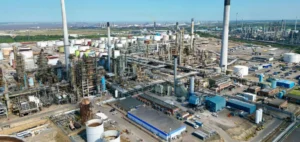The dispute between Chevron and Exxon Mobil revolves around Chevron’s $53 billion acquisition of Hess Corporation, and more specifically the takeover of Hess’s oil assets in Guyana. Exxon Mobil, which owns 45% of the consortium operating the offshore field in Guyana, contested the acquisition, arguing that the change of control triggers its pre-emptive right over Hess’s 30% stake in the project.
In 2008, Exxon drew up the Joint Operation Agreement (JOA) with its partners, including Hess and CNOOC, to govern operations on the Stabroek oil block in Guyana. This agreement stipulates that any change of control, direct or indirect, could trigger pre-emption rights. Chevron and Hess argue that this acquisition does not involve a change of control under the JOA definition.
Positions of the parties
Exxon Mobil argues that the right of first refusal is activated by any change of control, direct or indirect, which Chevron allegedly tried to circumvent. Chevron and Hess, for their part, argue that the structure of the acquisition leaves Hess intact as a unit within Chevron, not constituting a change of control under the terms of the contract.
James English, an oil M&A expert at Clark Hill Law, explains that the debate centers on the interpretation of the contract: “A literal approach would be very much in Chevron’s favor, while an analysis based on intent could find in Exxon’s favor.” If the arbitration panel opts for an intent analysis, this could result in protracted proceedings involving discovery, interrogatories and independent assessments, thereby delaying resolution.
Legal implications
The arbitration panel must determine whether the language of the contract is clear or whether the intention behind the words needs to be examined. A literal interpretation would favor Chevron, while an analysis based on intent could find in Exxon’s favor. Resolving this conflict may require in-depth discoveries and independent assessments, delaying a resolution until next year.
Chevron and Hess claim that the acquisition is structured to maintain Hess as a separate entity, which they argue does not constitute a change of control. However, Exxon argues that the structure of the acquisition is an attempt to circumvent the pre-emption rights stipulated in the JOA.
Economic stakes
Guyana is a key player, with projected production of 1.9 million barrels of oil equivalent per day within a decade, far outstripping countries like Venezuela. Most of the value of Chevron’s acquisition of Hess rests on these Guyanese assets, representing 60-80% of the total offer, according to experts.
The outcome of this arbitration could have major repercussions on the future strategies of the oil giants in terms of acquisitions and rights of first refusal in international partnerships. In the event of victory, Exxon could choose to buy Hess’s 30% stake in the project or receive compensation from Chevron, thus changing the dynamics of the consortium in Guyana.
Impact on the oil market
The outcome of this case could also have wider implications for the global oil market. If Chevron succeeds in finalizing the acquisition of Hess, it will consolidate its position as a leader in the oil industry with increased access to Guyana’s reserves. This could stimulate investment in the development of the country’s oil infrastructure and attract more international partners.
On the other hand, a decision in favor of Exxon could set a precedent for pre-emptive rights in joint venture agreements, strengthening the positions of incumbents in the face of new acquisitions. This could also encourage companies to be even more vigilant when drafting and revising their contractual agreements, to avoid similar disputes in the future.
Guyana’s strategic importance for Chevron is undeniable, with oil reserves estimated at several billion barrels. The consolidation of these assets would considerably strengthen Chevron’s production capacity and its influence on the global oil market. However, the arbitration process and its potential legal and financial consequences remain a major obstacle to the completion of this acquisition.
The outcome of this arbitration is crucial not only for the parties directly involved, but also for the oil industry as a whole, as it could redefine the rules of the game when it comes to mergers and acquisitions in this sector. The outcome of this dispute could influence the way oil companies negotiate and structure their agreements in the future, with increased attention being paid to change-of-control clauses and pre-emption rights.
In short, the dispute between Chevron and Exxon Mobil over control of Hess’s assets in Guyana represents a turning point for the oil industry. The repercussions of this case will extend far beyond Guyana’s borders, influencing acquisition strategies, contractual relationships and power dynamics within the global energy sector.





















